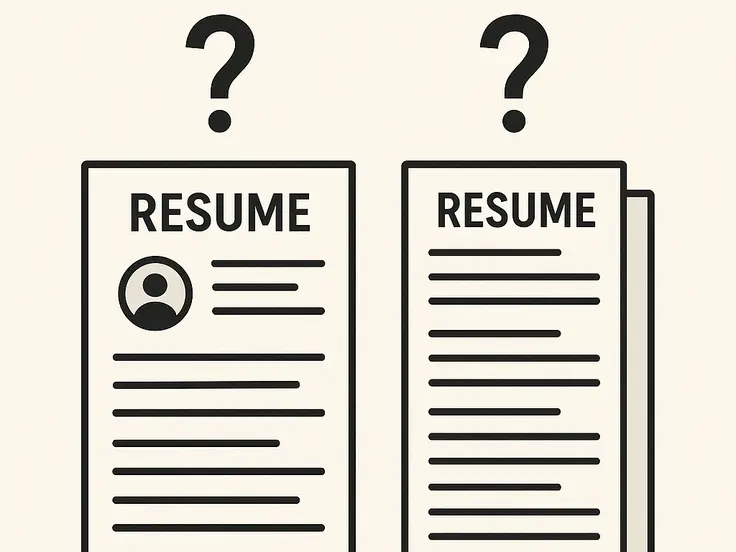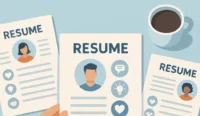Resume rules evolve—and one of the most debated topics among job seekers and recruiters alike is still this: Should your resume be one page long?
In 2025, the answer isn’t black and white. While attention spans are shorter and hiring tools more advanced, resume length isn’t about page count anymore. It’s about value per line.
Here’s what you need to know to decide whether a one-page or two-page resume is right for your job search this year.
Where the One-Page Rule Comes From
The one-page resume became popular in the pre-digital era when paper resumes were hand-reviewed. It was practical: short, concise, and easy to scan.
But now, most resumes are read on screens or run through Applicant Tracking Systems (ATS), which don’t care how many pages your resume has—they care about relevance, formatting, and keyword alignment.
What Recruiters Really Think in 2025
According to 2025 surveys:
- 58% of recruiters prefer 1-page resumes for entry-level roles
- 72% say 2 pages are fine for experienced professionals
- Most care more about content quality than length
Bottom line? It’s not about size—it’s about clarity.
When to Use a One-Page Resume
Stick to one page if you:
- Are a student or recent graduate
- Have less than 5 years of experience
- Are making a career pivot or reentering the workforce
- Are applying for highly competitive internships or programs
Pros:
- Easy to scan quickly
- Forces you to focus on key accomplishments
- Looks sharp and modern on mobile screens
When Two Pages Are Better
Opt for a two-page resume if you:
- Have 6+ years of relevant experience
- Are applying to mid-level or senior roles
- Have multiple certifications, publications, or projects
- Need to demonstrate technical breadth or leadership progression
Pros:
- Allows room to show career growth and impact
- Ideal for technical, executive, or portfolio-based roles
- Gives space for tailoring to complex job descriptions
Note: Recruiters won’t read the second page unless the first one impresses—make page one count.
How to Keep Any Resume Engaging—No Matter the Length
Prioritize the Top Third
Your summary, key skills, and most recent accomplishments should appear above the fold.
Use Bullet Points and White Space
Avoid dense paragraphs. Use 3–6 bullets per role with measurable achievements.
Customize Per Application
Every resume you send should be tailored to the job posting. Highlight the most relevant experience for that role.
Remove Fluff
Eliminate outdated skills, irrelevant jobs, or repeated phrases. Every line should add value.
Use Smart Formatting
Stick to professional fonts, clear section headers, and consistent spacing. ATS-friendly formats win over design-heavy layouts.
Real Examples
One-Page (Entry-Level Digital Marketing Assistant)
- Summary with 2 lines
- Skills section (CRM, SEO, Canva, Mailchimp)
- 2 roles with 3 bullets each
- Education + certification (Google Ads)
- Contact + LinkedIn
Two-Page (Senior Product Manager)
Page 1:
- Summary + skills
- Most recent two roles with 4–6 bullets each
- Metrics and leadership impact
Page 2:
- Earlier career roles
- Education
- Certifications (PMP, ScrumMaster)
- Awards or public speaking engagements
FAQs: One-Page Resume in 2025
Q1: Will a two-page resume be rejected by ATS?
No. ATS reads the content, not the page count. Just make sure both pages are clean and keyword-aligned.
Q2: Can I shrink font size to fit everything on one page?
Avoid it. Stick to readable fonts (10–12 pt). Shrinking text to cram content in makes your resume harder to read.
Q3: Should I include everything on my resume?
Only include what’s relevant to the job you’re applying for. Cut older, unrelated roles or combine similar experience.
Q4: What if I’m right on the edge (5–6 years of experience)?
Create both! Keep a one-pager for general networking and a detailed two-page version for tailored applications.
Final Thoughts
In 2025, it’s not about the number of pages—it’s about making every line count.
Use a one-page resume when space forces you to be concise and direct. Use two pages when your experience deserves more room to shine.
Either way, your goal is the same: clarity, relevance, and results.






